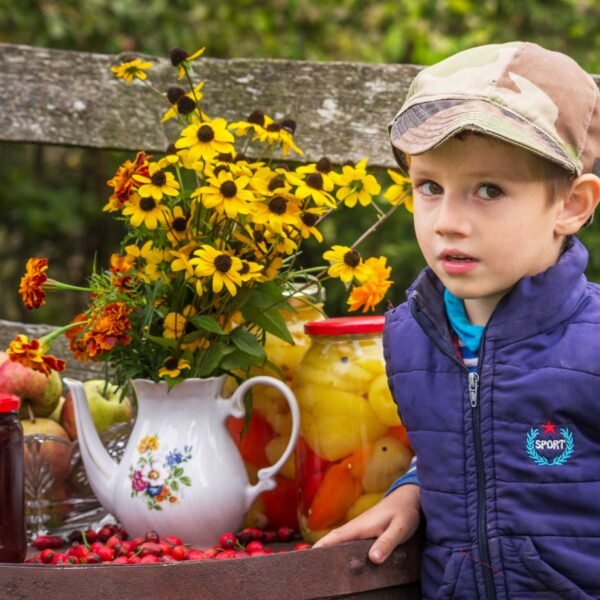Welcome to Tomaševo, a village situated at 753 meters above sea level in the stunning Vraneška Valley, one of the most beautiful areas of northeastern Montenegro. This place, home to around 300 residents today, was once called Ljubović after the river and parish, and later, until 1952, bore the name Šahovići. It now proudly carries the name of Tomaš Žižić (1909–1942), a national hero of World War II who grew up here, completed his primary education, and became a key organizer of the uprising against the occupiers. His memorial bust stands in the village as a reminder of his bravery and sacrifice. Tomaševo is administratively linked to the villages of Pape, Čekrlije, Selakovići, Musići, and Duga Njiva, together forming the heart of this valley.
The Vraneška Valley, which you enter via the Sljepač Bridge – the second largest on the Bar-Belgrade railway – stretches from Tomaševo and Pavino Polje all the way to Kovren. It is surrounded by the Lisa and Žuber mountains, as well as the Kovren and Gorič hills, covered in oak, beech, and coniferous forests. The clear Ljuboviđa River flows through the valley, its name woven into verses filled with love and legend: “This river has seen great love…”. The natural abundance of this region has long attracted Vlach shepherds for its rich pastures, and the remnants of their abandoned katuns (shepherd huts) still bear witness to that time.
Little precise information exists about the area’s early history, but it is known that during the Duklja Kingdom of the Vojislavljević dynasty, it belonged to the Debreca parish in the Podgorje region, while under the Nemanjić dynasty, it was part of the Ljuboviđa parish. The valley was a favored spot for monastic communities, and its natural wealth has drawn people since ancient times. Until the Balkan Wars, Vraneška Valley served as the seat of the Turkish kaza (district) of Donji Kolašin, centered in Šahovići, before joining the Principality of Montenegro in 1912.
Vraneska Dolina, through which the Ljubovidja River winds, has been a meeting place of people, cultures, and historical events for centuries. Located in the heart of the Bijelo Polje region, it now offers a blend of spiritual heritage, active tourism, and untouched nature that invites exploration.
Monasteries of Zlates and Bliskovo
– Witnesses of Time
This region is home to two significant monasteries – Zlates and Bliskovo, whose presence testifies to the spiritual and cultural heritage of Vraneska Dolina.
The Zlateš Monastery, located in a peaceful valley in the village of Tomasevo, is dedicated to St. Prophet Elijah. Its simple architecture blends harmoniously with the natural surroundings, while its interior is adorned with an iconostasis featuring traditional Orthodox icons. Originally a church, it was later transformed into a monastery, becoming a place of prayer and spiritual retreat.
The Bliskovo Monastery, situated deeper within Vraneska Dolina, is hidden among hills and forests, offering a sense of peace and tranquility. Its modest architecture and natural setting make it a sanctuary for visitors seeking spiritual reflection and insight into the history of this region.
Cycling Route
– Through Landscapes of the Past and Present
Vraneška Dolina provides ideal conditions for cycling routes that connect cultural and natural landmarks. The trail winds through picturesque landscapes, passing by the monasteries of Zlates and Bliskovo, offering cyclists a chance to pause, feel the spirit of the place, and continue towards a unique natural phenomenon – the Skakala Waterfall.
Hiking Trail to Skakala Waterfall
– A Journey Through Untouched Nature
For hiking enthusiasts, the trail to Skakala Waterfall offers an authentic experience of the region’s nature. The path leads through lush vegetation and gentle meadows, providing an unforgettable journey. The waterfall, cascading from great heights, is one of the most stunning natural wonders of this area. It is especially impressive in spring and autumn when the strong water flow creates a dramatic sight, while in summer, it provides a refreshing retreat in the shade of centuries-old trees.
Mihailo Miša Janketić (1938–2019), a legendary Yugoslav actor, spent his childhood in Tomasevo, where early hardships shaped his strength and resilience. Losing his parents during World War II, he carried a promise to one day give his children the warmth and love he never had.
His first steps on stage were taken right here, in Sekulina Tavern, where he moved the audience to tears while reciting “At My Mother’s Grave”.
FROM SMALL STAGES TO THEATER ICON
Janketić became a pillar of Yugoslav Drama Theater, starring in classics such as “Crime and Punishment,” “A Streetcar Named Desire,” “When Pumpkins Blossomed”. His breakthrough came in Jean-Paul Sartre’s “Dirty Hands” (1966), earning him the Raša Plaović award and cementing his place among the greatest.
SUMMER ACTING SCHOOL
Although born in Novi Sad, he returned to Tomasevo every summer, where he founded a theater workshop on his family estate. His Summer Acting School became a cherished tradition, attracting locals and visitors eager to witness outstanding performances.
From his Vraneš childhood to the “Dobrica’s Ring” – the highest award for lifetime achievement – Miša Janketić remains a legend of Yugoslav theater and a devoted son of his homeland.
Vraneška Valley is named after Herak Vraneš, who is considered the founder of the Vraneši tribe and lived during the second half of the 14th and the beginning of the 15th century. As a prominent local native, he played a significant role in governing this area, which is confirmed by Ottoman censuses from 1468 and 1477, where his name is recorded. His family reflects the complex historical processes this region underwent, particularly in the context of the transition from Christianity to Islam. His son Đorđe is known for restoring the Zastup Monastery, while another son, Ibrahim, converted to Islam and attained the high military rank of pasha, indicating the socio-political changes of that time.
Church of the Presentation of the Holy Mother of God
This church, built in the 20th century, serves not only as a religious but also as a cultural center for the residents of Tomaševo. Its iconostasis is particularly significant because it bears the inscribed names of all those whose donations aided its restoration, leaving a lasting mark on the history of this region. Next to the church lies an old cemetery, which, with its long-standing tombstones, testifies to the rich past and continuity of life in this area.
Roman Stele at the Village Cemetery
At the village cemetery, a significant archaeological artifact can be seen – a Roman stele carved with three human figures. This tombstone provides clear evidence that Vraneška Valley was inhabited as far back as ancient times, during the period of Roman dominance. Its presence suggests that a Roman urban settlement existed nearby, further confirming the historical importance of this area and its prolonged habitation across different eras.
Located about 3 km from Zlates Monastery, Novakovic Cave is shrouded in legends. Some believe it is connected to Zuta Cave, while other tunnels are said to lead deep underground, even to Kosovo Polje. It was once a refuge for the outlaw Starina Novak, and stories speak of hidden treasure lying behind an underground lake that no one has dared to explore.
THE LEGEND OF THE LATIN TREASURE
According to legend, after the fall of the Brskovo trading town, Latins (Western Catholics) hid their treasure in Novakovic Cave. Some fled, while others later returned to retrieve the buried riches. Even today, locals search for the gold believed to be hidden in the cave’s deep chambers.
THE LEGEND OF ZUTA CAVE
Perched above Novakovic Cave, Zuta Cave is difficult to access and is said to be connected through underground tunnels. Many have tried to explore its depths but failed. In the late 19th century, Muso Muslic managed to enter and discovered an underground lake, mysterious inscriptions, and a treasure-filled chamber guarded by a black ram with enormous horns. Terrified, he barely made it out alive.
CANYONS AND SPRINGS OF VRANSTICA
A scenic trail leads to Novakovic Cave, passing through the Vranstica Canyon, following a crystal-clear river with small waterfalls and rest stops. Nearby lies the Bezdanica Canyon, whose towering cliffs reveal stunning natural rock formations when the river dries up in summer.
This fountain stands as an eternal witness and preserves the precious memory of the fearless youth of Jagoda Bogićević, a brave partisan from Bjelopavlići. As the medical officer of the 1st Company, 4th Battalion of the Sava Kovačević Brigade within the Fifth Montenegrin Brigade, Jagoda left her mark on numerous battlefields. She endured fierce battles at Vučevo, Igman, Ljubin Grob, Treskavica, Prozor, Vakuf, and Neretva, where she demonstrated exceptional courage and determination. Amid the whirlwind of war, her gentle yet resolute hands tirelessly healed the wounds of many comrades, offering them not only care but also hope and strength to persevere in the fight for freedom. Her contribution was a light in the darkness of wartime days, a symbol of sacrifice and humanity amidst chaos.
Like her father Mirko, who fell in the struggle for freedom in 1942, Jagoda never wavered in the face of challenges; she stood bravely alongside her comrades. At just 19 years old, during an assault on enemy barricades, she gave her young life here, at Vučji Potok, on April 18, 1944, leaving behind an indelible legacy. Yet Jagoda has not faded from the people’s memory. Her bravery and sacrifice live on in songs, in the renowned Yugoslav film Sutjeska, where her role as a courageous partisan nurse was portrayed by actress Neda Arnerić, and in stories passed down from generation to generation. And here, beside this fountain, her name and deeds will endure as long as clear water flows from the spring of freedom, reminding us of her unwavering strength and nobility. Glory and gratitude to her for all she did.
*Listed are rural households that are members of our association and are featured on this site. For other accommodation providers in this area, check Google Maps or Booking.com.
Activities in Vraneška Valley are diverse, offering opportunities to enjoy both nature and culture:
Embark on a hike or bike ride – with a guide or on your own – to the Galice viewpoint, Lještanica Waterfall, the source and canyon of the Vranštica River, or the Bezdanica Canyon.
Explore cycling route 916 or marked mountain trails across Lisa Mountain (951).
Experience a speleological adventure in Novaković Cave with a mandatory local guide and uncover its secrets and beauty.
Enjoy a bike ride from Zlateš Monastery to Bliškova Monastery through the valley’s green paths.
Try horseback riding across the Lisa Mountain plateaus or join a riding school.
Visit Zlateš and Bliškova monasteries, the Church of the Presentation of the Virgin Mary in Vranštica, or the village cemetery to learn how the valley got its name.
Be enchanted by the traditional architecture of old houses, blending seamlessly with nature and the surrounding mountain ridges.
Sample local specialties – cheese, kajmak, yogurt, cured meats, and homemade dishes from organic gardens and orchards.
Tomaševo and Vraneška Valley await you to discover their natural beauty, rich history, and warm hospitality!
PHOTOGRAPHY
Villages Included in the Project
Project
The Regional Development Agency for Bjelasica, Komovi, and Prokletije (RRA BKP), in collaboration with its partners—the Municipality of Peć (Kosovo) and the Regional Development Agency WEST (Kosovo)—implemented the project “Turning Our Villages into Tourist Destinations” under the IPA II Cross-Border Cooperation Program Montenegro – Kosovo 2014–2020.
Through this project, selected villages in the regions of Plav, Andrijevica, Berane, Bijelo Polje, Mojkovac, and Bar saw improvements in tourist infrastructure. The initiative established thematic rural trails linking natural and cultural attractions, installed signage, information boards, and markers for villages and locations, and supported certain rural households in enhancing their conditions for offering tourism services. As a result of the project, a joint promotional brochure was created, incorporating new thematic rural routes and local offerings, along with promotional video material.
Additional information about the village
TOURIST ORGANISATION BIJELO POLJE
+382 50 484795
turisticka@bijelopolje.co.me













